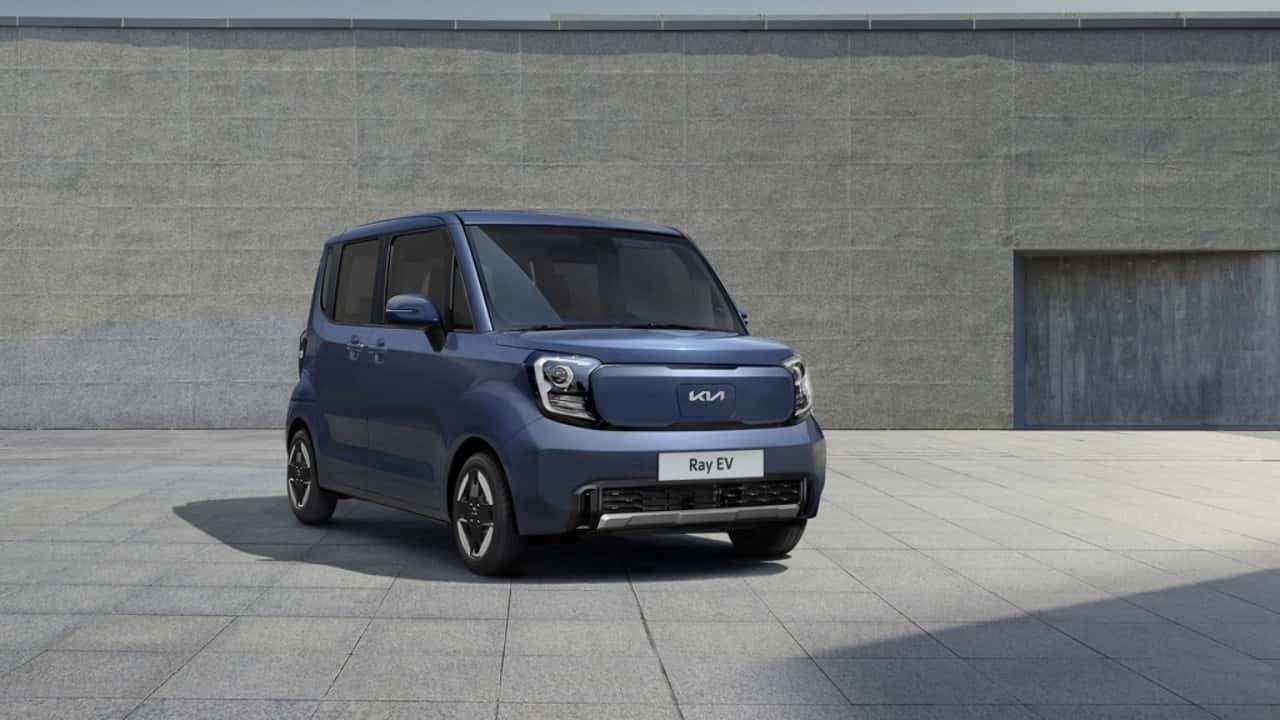Kia, a leading player in the electric vehicle (EV) market, has actually been involved in EV production since 2011, prior to the launch of the Soul EV in 2014. The company’s first production EV was the Ray EV, a city car exclusively available in the Korean market. Despite its age, the Ray EV is still in production today, although it faced challenges due to its limited driving range and a lack of charging infrastructure in South Korea.
However, Kia remained committed to its smallest EV and unveiled a second facelift for the Ray last summer. While the gasoline-powered version of the car was revealed a year ago, the EV version has only recently been introduced in the Korean market. The updated Ray EV boasts significant improvements in its powertrain.
The new model features a 35.2-kilowatt-hour LFP battery supplied by CATL, nearly doubling the capacity of the previous model’s 16.4-kWh pack. This upgrade allows the Ray EV to achieve an estimated combined driving range of 127 miles (205 kilometers) on a single charge, compared to the previous range of 86 miles (138 km). Additionally, the electric motor now delivers 64 kilowatts (86 horsepower) and 108 pound-feet of torque, surpassing the previous model’s 50-kW (67-hp) motor.
Charging the battery is also more convenient, with a 150 kW DC fast charger taking 40 minutes to charge from 10 to 80 percent, and a 7kW charger taking 6 hours to charge from 10 to 100 percent.
According to a Kia official, the new Ray EV offers customers more than 200 km of mileage, optimized driving performance for urban areas, and a spacious interior, making it an attractive option for those seeking an entry-level electric minicar.
Pre-orders for the Ray EV will begin on August 24, and the official launch is scheduled for September 12. The facelifted model starts at around $20,800 (27.75 million won), making it an affordable choice for Korean customers compared to the previous version, which was priced at 45 million won.
Kia also has plans to introduce a single-seater van version of the Ray EV, targeting self-employed individuals and small business owners. The Ray is also available with a 1.0-liter turbocharged gasoline engine.
Industry experts anticipate that the Ray EV will revitalize the small EV and minicar market in Korea, following the success of Nissan’s Sakura electric kei car in Japan.
Overall, Kia’s commitment to EVs dates back to 2011 with the Ray EV, and the latest facelifted model brings significant improvements in range, power, and charging convenience, making it a compelling option in the Korean market.
Kia Ray EV Minicar Makes a Comeback in Korea with Enhanced Range and Power at a Lower Price
In recent years, electric vehicles (EVs) have gained significant traction as the automotive industry works towards more sustainable and eco-friendly transportation solutions. Kia Motors, a leading global automaker, has long embraced this paradigm shift, consistently introducing innovative EV models to its lineup. Kia Ray EV, a popular minicar, has now made a remarkable comeback in the South Korean market, offering enhanced range and power at a more affordable price point.
The Kia Ray EV is well-known for its compact dimensions, making it an ideal choice for urban dwellers seeking a convenient and environmentally conscious mode of transportation. The latest rendition of this iconic minicar seeks to build on its success by improving key aspects, primarily the driving range and power output, ensuring a more practical and versatile driving experience.
With technological advancements and insights gained from its previous iterations, Kia has managed to engineer the new Ray EV with an impressive battery range extension. The upgraded model now offers an enhanced electric range of up to 223 kilometers (138 miles) on a single charge, significantly reducing the need for frequent charging sessions. This range is achieved through the implementation of an improved lithium-ion polymer battery pack, integrated with cutting-edge battery management systems to optimize performance.
Furthermore, the Kia Ray EV has witnessed a notable increase in power output, further enhancing its driving capabilities. Equipped with a more potent electric motor, the new model flaunts a commanding 61.5 kW of power and 210 Nm of torque. Acceleration from 0 to 100 km/h (0 to 62 mph) has improved, delivering a nimble and energetic driving experience that users will undoubtedly appreciate.
One of the most enticing aspects of the Kia Ray EV’s resurgence is the attractive pricing strategy implemented by the automaker. Acknowledging the importance of affordability in accelerating the adoption of electric vehicles, Kia Motors has significantly lowered the price of the new Ray EV, making it a compelling option for budget-conscious consumers. This marks a substantial improvement over previous versions and positions Kia as a leader in providing cost-effective and accessible electric mobility solutions.
Beyond range, power, and pricing, Kia has also focused on enhancing the overall user experience with the Ray EV. The interior has been meticulously crafted, boasting a spacious cabin equipped with premium materials and modern features. A large touchscreen infotainment system, compatibility with smartphones, and advanced driver-assistance systems ensure drivers enjoy a comfortable and connected journey, backed by cutting-edge safety technology.
Despite the strides made in enhancing the Kia Ray EV, the automaker remains committed to further improving its electric vehicle offerings. Future plans include the introduction of more EV models, advancements in battery technology, and the establishment of a robust charging infrastructure. By continually adapting to evolving market requirements, Kia is at the forefront of shaping a greener and more sustainable future.
In conclusion, the comeback of the Kia Ray EV minicar in Korea is a testament to Kia Motors’ dedication to providing practical, affordable, and environmentally friendly transportation options. With its enhanced range, increased power, enticing price point, and improved user experience, the Ray EV is set to make waves in the market. Kia’s continued efforts in expanding its electric vehicle lineup and fostering a sustainable future showcase its commitment to both its customers and the planet.

